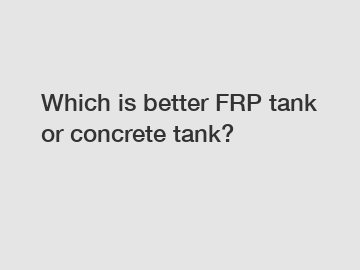Which is better FRP tank or concrete tank?
Step 1: Cost
When comparing FRP tanks and concrete tanks, the first factor to consider is cost. FRP tanks tend to be more cost-effective than concrete tanks due to their lighter weight and ease of installation.
Step 2: Durability
In terms of durability, FRP tanks have a longer lifespan than concrete tanks. FRP tanks are resistant to corrosion, rust, and chemicals, making them ideal for various industrial and commercial applications.
Step 3: Maintenance
Maintenance is another important aspect to consider when choosing between FRP and concrete tanks. FRP tanks require minimal maintenance compared to concrete tanks, which may develop cracks and leaks over time, requiring repairs.
Step 4: Installation
The installation process for FRP tanks is less complex and time-consuming compared to concrete tanks. FRP tanks can be easily transported and installed on-site, reducing overall labor costs and time.
Step 5: Flexibility
FRP tanks offer more flexibility in terms of design and customization compared to concrete tanks. FRP tanks can be designed to fit specific project requirements, whereas concrete tanks have limited design options.In conclusion, when considering the factors of cost, durability, maintenance, installation, and flexibility, FRP tanks are generally a better choice than concrete tanks. They are cost-effective, durable, low maintenance, easy to install, and offer more flexibility in design.
If you are looking for more details, kindly visit Fiberglass Tank Manufacturers, non toxicity fiberglass storage tank, Fiberglass Tank Manufacturing.




Comments
All Comments (0)